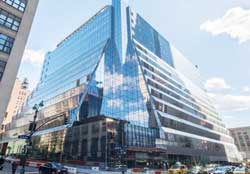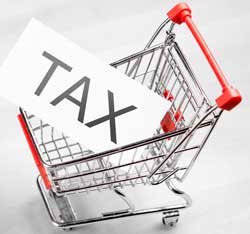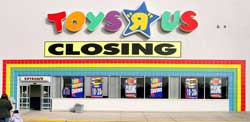
2018 was an exciting year for retail. Evolving technology, changing consumer preferences, and political shakeups all had a large impact on our industry. Here is Independent Retailer’s roundup of top trends, influencers, buzzwords, and developments that affected retail in 2018. Many of these topics were explored in greater detail throughout the year – those articles can be found on blog.wholesalecentral.com
 Alibaba
Alibaba
Alibaba hosts the world’s biggest shopping day: Singles Day. This year, sales topped 30 billion dollars on Singles Day in November. By comparison, consumers spend around $5 billion on Black Friday. Like Amazon Prime Day on steroids,’ Alibaba’s Singles Day grew over 27% this year.
Brick and Mortar
If 2017 was the year of the “Retail Apocalypse” 2018 was a year of brick and mortar renaissance. Though national retailer bankruptcies made headlines, store openings outpaced closings for the year. Notably, many online and ecommerce brands opened their first flagship and pop-up stores, reinforcing what we already know: that brick and mortar is an important part of the consumer and shopping experience.
Consumer Confidence
At the end of 2018, consumer confidence is at a 20-year high. A healthy economy and low unemployment rates have increased consumer confidence and spending levels throughout the year. There are no signs of this upward trend slowing down as we finish out the holiday season and head into 2019.
Discount and Dollar Stores
Despite rising consumer confidence levels, dollar stores still reign supreme in many areas of the country, demonstrating that in the face of good economic conditions, shoppers always love a good deal. Traditionally, dollar stores thrived in rural areas. However, Dollar General is bringing a small concept version of its store, DGX, to major cities.
Experiential Retail
As department stores and large mall brands that have provided the same unchanging shopping experience for decades continue to decline, other brands and startups continue to experiment with the in-store experience. Between showrooms, events, pop-ups, and more, retailers are getting creative when it comes to providing an appealing and unique experience.
Fur Babies
Sales for pet product continue to climb as Millennials, among others, prove again and again that they will not hold back when it comes to spending on pets. During the recession, pet products were a category that remained relatively unphased by the downward economy. Now that the economy is booming, pet product sales are increasing.
 Glossier
Glossier
Glossier was just one of the many ecommerce brands that opened a wildly successful brick and mortar store in 2018, helping to prove yet again that brick and mortar is far from dead. The Glossier location in NYC has already become a major tourist attraction. Retailers across the country are taking note of Glossier’s retail-as-experience concept, where customers come to the store to hang out as much as they visit to shop.
 HQ2
HQ2
In September 2017, Amazon announced they would be opening a second headquarters, and asked cities interested in hosting the headquarters to submit a proposal. Amazon claimed the second headquarters will bring 50,000 high-paying jobs. Amazon received 238 proposals in total. After over a year of nearly every major and minor city in the US trying to woo Amazon, the commerce giant announced their second headquarters would be split between New York City and Northern Virginia.
2018 was an even bigger year for retail and Instagram. Curated feeds filled with shoppable posts have helped grow many online brands and influencers. As a small or independent business, Instagram is a powerful tool for gaining brand recognition. Just a few months ago, Instagram announced they are releasing a new platform dedicated to shopping, which we hope to see next year.
 Jobs
Jobs
In recent months, the U.S economy has held low unemployment rates of just 3.7%, the lowest rate in 50 years. While this is good news for our economy and for consumer spending, low unemployment means that retailers have had a hard time finding and retaining employees, especially seasonal employees. Retailers across the country are rethinking their benefits packages and company cultures to attract more workers.
Kickstarter
It’s been a good year for retail startups and entrepreneurs. Shoppers are looking for what’s new and retailers are trying to provide what’s next. As large department stores fail to innovate, there is plenty of room for independent companies to make a splash. In the years to come, we expect to see more and more new, innovative retailers find success with today’s shoppers.
Loyalty Programs
Consumers have more choices than ever before. Retailers are getting creative with loyalty programs to try and make their store a top choice. Some retailers are copying Amazon’s Prime membership, while others offer points-based programs, or rewards for engaging with reviews and on social media. For independent retailers, there are more and more free or affordable software tools you can use to implement your own loyalty program.
 Millennials
Millennials
It’s almost 2019 and the retail industry is still talking a lot about Millennials. But, this year, the tone has been more positive as the generation is finally starting to buy homes and participate more in the traditional retail economy. Millennials are also leading the way on sustainability in retail, which has become an important topic for the future.
National Retail Federation
The NRF, our industry’s national lobbying organization, has had a busy year. In 2017, they lobbied against the Border Adjustment Tax. This year, they advocate for tax reform and against new tariffs on imports in the ongoing Trade War.
 Online Sales Tax
Online Sales Tax
After much controversy, the Supreme Court issued a new ruling on sales tax in June. This new ruling allows states to tax ecommerce companies that deliver packages in that state, even if they do not have a store, warehouse, or other physical presence. Since the ruling, states have been slowly updating their practices to start collecting sales tax from ecommerce businesses.
Prime Day
Amazon’s branded holiday, Prime Day, is a dedicated shopping event in July where Amazon Prime members have exclusive access to online deals. This year, Prime Day was held over a 36-hour period in July and brought in $4.68 billion in sales. Other retailers have attempted to copy Prime Day, such as Wayfair and Macy’s. Heading into next year, Prime Day and other retail-branded holidays will only grow bigger.
QR Codes
After making the announcement a few years ago, Amazon is finally gaining public traction with Amazon Go stores and their “just walk out” technology. Shoppers who frequent the stores are getting used to paying via QR code. As Amazon Go continues to open new locations, we expect other retailers will try to copy similar technology.
 Royal Wedding
Royal Wedding
Prince Harry and Meghan Markle were married earlier this year on May 19th. With all of the fanfare, even here in the United States, many retailers saw a bump in spending as people all over the country held celebrations and viewing parties. This once-in-a-lifetime event was a fun and profitable boost for retailers.
Sears
Sears’ slow and sad swan song continued throughout 2018, culminating in another Chapter 11 bankruptcy filing in October. The retail chain is shuttering over 180 locations and has promised to reemerge from the filing as a significantly smaller brand. Sears’ saga has shown that even the biggest retail giants can fall if they fail to adapt to the needs of consumers.
 Toys “R” Us
Toys “R” Us
This year, Toys “R” Us officially closed their doors. While this was a sad time for many nostalgic shoppers, it also left a giant hole in the toy industry. As the holiday season approached, more and more retailers tried to position themselves as the new toy destination by publishing gift guides and running commercials. As we head into 2019, it’s still unclear who the frontrunner is, and small businesses have plenty of opportunities to pick up where Toys “R” Us left off.
Universal Postal Union
The Universal Postal Union treaty set lower shipping rates for developing countries, including China, back in 1969. That is why today, consumers can order from a Chinese ecommerce giant and have it shipped across the globe for little to no money. As part of the escalating Trade War, President Trump has announced that the U.S. will pull out of the treaty, which would be a boost for American retailers looking to compete.
 Victoria’s Secret
Victoria’s Secret
This year, Victoria’s Secret has faltered amongst a group of new underwear startup companies such as Third Love and True&Co, showing that American consumers are looking for more inclusive brands. The company’s traditional supermodel catwalk fashion show is also coming under shopper and media scrutiny due to the development of the #MeToo movement.
Walmart
Walmart has made big moves in 2018 in an effort to compete with Amazon. From launching an artificial intelligence lab in one of their stores, experimenting with last mile delivery, and grocery pick-up, Walmart hasn’t been afraid to try new things. Perhaps most notably, Walmart updated their shipping policies so that shoppers can now receive free shipping from third-party sellers on Walmart’s website.
RetailX
This year, the first RetailX conference was announced. This new retail event brings together Globalshop, Internet Retailer Conference & Exhibition (IRCE), and RFID Journal LIVE! RetailX is set to be held June 25-27th in Chicago. This not-to-miss retail event will cover digital strategies, ecommerce, in-store design, and in-store technology.
 Youtube
Youtube
While brands themselves are producing videos on Instagram and IGTV, it’s still true that Gen Z loves YouTubers. And, consumers of all ages look at Youtube and video reviews before making a purchase decision. Retailers continue to partner with popular Youtube influencers to get their products reviewed and viewed by thousands if not millions of consumers.
Gen Z
Generation Z, those born from the mid-1990s – 2010, already has $44 billion in buying power. Over the next few years, they will overtake Millennials as the largest generation and the ones with the most buying power. Though this generation entered the mainstream media spotlight this year, they will be important for retailers in the years to come.